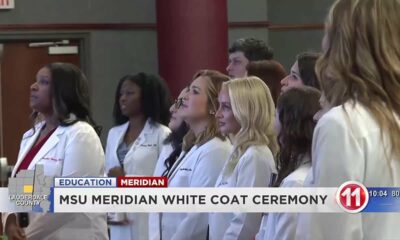Kaiser Health News
Even in the Most Depressed County in America, Stigma Around Mental Illness Persists
Phil Galewitz, KFF Health News
Wed, 06 Sep 2023 09:00:00 +0000
LOGAN, W.Va. — Sitting on a bench laughing with a co-worker during a morning smoke break, Debra Orcutt quickly raises her hand when asked if she knows anyone dealing with depression.
“I am,” she tells a visitor to the roadside market where she bakes brownies and peanut butter fudge.
Orcutt, 63, has used medication to manage her depression for more than two decades since her son, Kyle, died at age 4 from a congenital illness. “There were days I couldn't leave the house,” she said.
After a long marriage that ended in divorce, she said, she lives happily with her “hillbilly” partner near this small town in the heart of Appalachia, an hour's drive south of the state capital, Charleston. But certain things, such as the sound of an ambulance siren or the death of her potbellied pig, can trigger lingering feelings of sadness.
Orcutt is hardly alone in this county, where almost everyone knows someone with depression — or experiences it themselves. And that's not an exaggeration.
An estimated 32% of adults in Logan County, West Virginia, have been diagnosed with depression — the highest rate in the United States and nearly double the national rate, according to a report released in June by the Centers for Disease Control and Prevention.
The study, which provided estimates by county based on a national survey of nearly 400,000 people conducted in 2020, showed depression rates varied widely by region and even within states. Most counties with the highest rates were in a 13-state swath of Appalachia; the southern Mississippi River Valley, particularly Arkansas, Louisiana, and Tennessee; and Missouri, Oklahoma, and Washington.
The states with the lowest rates included California, Illinois, Alaska, and Hawaii.
West Virginia, which also has some of the nation's highest rates of poverty and poor health, is home to eight of the 10 counties with the highest estimated rates of adult depression, the CDC survey found.
Overall, 18% of adults in the United States reported having been diagnosed with depression in their lifetimes, the CDC survey found.
Health experts say depression has risen to epidemic levels in the U.S. in recent decades, and the covid-19 pandemic exacerbated the problem with its isolating public health measures, threat of serious illness, lingering health effects, and sobering death toll.
With heightened awareness of rising depression rates, the Biden administration has announced plans to expand access to mental health care.
The CDC findings correlate with those from other surveys that show depression rates at alarming levels.
More than a simple case of the blues, depression is a mood disorder that causes a persistent feeling of sadness and a loss of interest in things once enjoyed. It affects eating, sleeping, and concentrating, as well as activities such as working or going to school.
“Depression is often a chronic illness, and if you stop treatment, it eventually comes back,” said Mark Miller, a psychiatry professor at West Virginia University in Morgantown.
He said his state's combination of poor overall health, low education levels, and poverty — as well as the opioid epidemic, which has hit West Virginia particularly hard — takes a punishing toll on residents' mental health.
In Logan County, nearly a quarter of whose 31,000 residents live in poverty, few expressed surprise in interviews with KFF Health News when told their home tops the list of most depressed counties.
“You've come to the right place for depression,” said Marie Tomblin as she worked the front desk of the Holiday Inn Express & Suites in Logan, noting her sister, daughter, and other family members have faced it. “I see it a whole lot, and people think it's a normal feeling and don't want to admit they have a problem,” she said.
Logan County is in the Appalachian coal-mining region, now a shadow of its former self, as the industry has buckled under economic and regulatory pressures, taking many jobs with it. In Logan, the county seat, the downtown has numerous closed stores and office buildings, and few people were out walking its sidewalks on a recent weekday morning.
The county's high rates of chronic diseases like diabetes and obesity also make it a breeding ground for depression, health experts say.
While depression rates have risen nationally, Medicare claims data shows treatment for depression has increased more in West Virginia and especially in Logan County in recent years. Nationwide, 18% of enrollees in original Medicare received care related to depression in 2020, up from 16% in 2012 — despite an overall drop in care as the pandemic struck.
In Logan County, it was 28% of Medicare enrollees in 2020, up from 21% in 2012. As in the CDC study, Logan County's numbers were among the highest in the country.
Yet, health professionals here say they are not overwhelmed by people seeking help for the condition.
Robert Perez, an internist in Logan, estimates more than half of his patients have depression. But he said few want to talk about it or accept a referral to a psychiatrist and he is limited in what he can do for them.
“It's hard to convince people who don't want to be helped,” he said. “I don't have that much time to treat their depression.”
David Brash, the chief executive of Logan Regional Medical Center, which sits on a hill overlooking the town, said he's not surprised by the area's high depression rates.
The medical center doesn't have psychiatrists on staff, but its primary care doctors try to treat depression as part of their practice, he said. The center recently started offering telepsychiatric consultations for its physicians to help treat patients in its emergency room.
“When you come from this area, you know what the challenges are,” Brash said. “And the economic challenges affect the depression — it's not a new phenomenon.”
Diana Barnette, the county's top elected official as president of the Logan County Commission, said doctors are often too quick to give patients medicine when they are feeling down. “I'm not saying we do not have a lot of depression in the area, but culturally it's become so accepted to have a doctor give you a pill to make you feel better.”
Barnette, who owns several businesses in the county, including a movie theater, also blames the region's rainy, cloudy weather and how its mountains limit residents' sun exposure.
“There's still a lot of stigma around it,” said Michael Baker, a pharmacist at Aracoma Drug Company, a pharmacy in Chapmanville, the county's largest town after Logan.
Indeed, Chris Palmer, an assistant professor of psychiatry at Harvard Medical School, said the notion that overprescribing or cloudy weather explains high depression rates does not help the problem.
That viewpoint “strikes me as a hopeless and nihilistic attitude, that we are drowning and there is nothing we can do about it,” he said.
There are glimmers of hope here.
The pandemic is considered over by most residents; the state has leaned into its tourism motto, “Almost Heaven,” inspired by a well-known John Denver tune; and the region's economy is slowly shifting from coal as the county markets its wooded trails to all-terrain vehicle enthusiasts.
In June, the same month the CDC released its findings, Coalfield Health Center, a federally funded clinic in the county, announced it had hired its first psychiatrist, David Lewis.
Lewis, who grew up in Logan County and taught high school math here, said he has seen about 50 patients so far and knows he has room to see more.
“People are not used to having the option of going to a psychiatrist here, and doctors still refer out to bigger institutions, which could be in Charleston,” he said.
Coalfield is struggling to overcome the stigma and other treatment obstacles around depression. In this region, Lewis said, people often view going for mental health help as being “weak in faith.”
“Only a small percentage of people who need help for depression are getting it,” said Kristin Dial, the executive director of Coalfield Health Center. “What we have found is that we can refer them to Dr. Lewis, but we have a high no-show rate.”
“We have to be here when they are ready,” she said.
Lewis said the best treatment for depression includes improving diet and exercise and avoiding drugs and alcohol. But when patients are asked how they want to manage their illness, they tend just to want pills, he said.
Coalfield also has a nurse practitioner, Elice Hinkle, who recently finished training to offer counseling at the clinic.
Because patients know Hinkle from her having treated their physical ailments, she said, they are more likely to come for counseling, and she can coordinate efforts with a patient's other providers at the clinic.
Back at the market, Orcutt says it's been many years since she went to counseling. These days, she copes with her depression and anxiety by keeping busy with hobbies such as sculpting and painting.
“It helps not to dwell on it,” she said.
——————————
By: Phil Galewitz, KFF Health News
Title: Even in the Most Depressed County in America, Stigma Around Mental Illness Persists
Sourced From: kffhealthnews.org/news/article/most-depressed-county-logan-west-virginia-stigma-mental-illness/
Published Date: Wed, 06 Sep 2023 09:00:00 +0000
Did you miss our previous article…
https://www.biloxinewsevents.com/cozy-images-of-plush-toys-and-blankets-counter-messaging-on-safe-infant-sleep/
Kaiser Health News
Medical Residents Are Increasingly Avoiding States With Abortion Restrictions
Julie Rovner, KFF Health News and Rachana Pradhan
Thu, 09 May 2024 12:01:00 +0000
Isabella Rosario Blum was wrapping up medical school and considering residency programs to become a family practice physician when she got some frank advice: If she wanted to be trained to provide abortions, she shouldn't stay in Arizona.
Blum turned to programs mostly in states where abortion access — and, by extension, abortion training — is likely to remain protected, like California, Colorado, and New Mexico. Arizona has enacted a law banning most abortions after 15 weeks.
“I would really like to have all the training possible,” she said, “so of course that would have still been a limitation.”
In June, she will start her residency at Swedish Cherry Hill hospital in Seattle.
According to new statistics from the Association of American Medical Colleges, for the second year in a row, students graduating from U.S. medical schools were less likely to apply this year for residency positions in states with abortion bans and other significant abortion restrictions.
Since the Supreme Court in 2022 overturned the constitutional right to an abortion, state fights over abortion access have created plenty of uncertainty for pregnant patients and their doctors. But that uncertainty has also bled into the world of medical education, forcing some new doctors to factor state abortion laws into their decisions about where to begin their careers.
Fourteen states, primarily in the Midwest and South, have banned nearly all abortions. The new analysis by the AAMC — a preliminary copy of which was exclusively reviewed by KFF Health News before its public release — found that the number of applicants to residency programs in states with near-total abortion bans declined by 4.2%, compared with a 0.6% drop in states where abortion remains legal.
Notably, the AAMC's findings illuminate the broader problems abortion bans can create for a state's medical community, particularly in an era of provider shortages: The organization tracked a larger decrease in interest in residencies in states with abortion restrictions not only among those in specialties most likely to treat pregnant patients, like OB-GYNs and emergency room doctors, but also among aspiring doctors in other specialties.
“It should be concerning for states with severe restrictions on reproductive rights that so many new physicians — across specialties — are choosing to apply to other states for training instead,” wrote Atul Grover, executive director of the AAMC's Research and Action Institute.
The AAMC analysis found the number of applicants to OB-GYN residency programs in abortion ban states dropped by 6.7%, compared with a 0.4% increase in states where abortion remains legal. For internal medicine, the drop observed in abortion ban states was over five times as much as in states where abortion is legal.
In its analysis, the AAMC said an ongoing decline in interest in ban states among new doctors ultimately “may negatively affect access to care in those states.”
Jack Resneck Jr., immediate past president of the American Medical Association, said the data demonstrates yet another consequence of the post-Roe v. Wade era.
The AAMC analysis notes that even in states with abortion bans, residency programs are filling their positions — mostly because there are more graduating medical students in the U.S. and abroad than there are residency slots.
Still, Resneck said, “we're extraordinarily worried.” For example, physicians without adequate abortion training may not be able to manage miscarriages, ectopic pregnancies, or potential complications such as infection or hemorrhaging that could stem from pregnancy loss.
Those who work with students and residents say their observations support the AAMC's findings. “People don't want to go to a place where evidence-based practice and human rights in general are curtailed,” said Beverly Gray, an associate professor of obstetrics and gynecology at Duke University School of Medicine.
Abortion in North Carolina is banned in nearly all cases after 12 weeks. Women who experience unexpected complications or discover their baby has potentially fatal birth defects later in pregnancy may not be able to receive care there.
Gray said she worries that even though Duke is a highly sought training destination for medical residents, the abortion ban “impacts whether we have the best and brightest coming to North Carolina.”
Rohini Kousalya Siva will start her obstetrics and gynecology residency at MedStar Washington Hospital Center in Washington, D.C., this year. She said she did not consider programs in states that have banned or severely restricted abortion, applying instead to programs in Maryland, New Hampshire, New York, and Washington, D.C.
“We're physicians,” said Kousalya Siva, who attended medical school in Virginia and was previously president of the American Medical Student Association. “We're supposed to be giving the best evidence-based care to our patients, and we can't do that if we haven't been given abortion training.”
Another consideration: Most graduating medical students are in their 20s, “the age when people are starting to think about putting down roots and starting families,” said Gray, who added that she is noticing many more students ask about politics during their residency interviews.
And because most young doctors make their careers in the state where they do their residencies, “people don't feel safe potentially having their own pregnancies living in those states” with severe restrictions, said Debra Stulberg, chair of the Department of Family Medicine at the University of Chicago.
Stulberg and others worry that this self-selection away from states with abortion restrictions will exacerbate the shortages of physicians in rural and underserved areas.
“The geographic misalignment between where the needs are and where people are choosing to go is really problematic,” she said. “We don't need people further concentrating in urban areas where there's already good access.”
After attending medical school in Tennessee, which has adopted one of the most sweeping abortion bans in the nation, Hannah Light-Olson will start her OB-GYN residency at the University of California-San Francisco this summer.
It was not an easy decision, she said. “I feel some guilt and sadness leaving a situation where I feel like I could be of some help,” she said. “I feel deeply indebted to the program that trained me, and to the patients of Tennessee.”
Light-Olson said some of her fellow students applied to programs in abortion ban states “because they think we need pro-choice providers in restrictive states now more than ever.” In fact, she said, she also applied to programs in ban states when she was confident the program had a way to provide abortion training.
“I felt like there was no perfect, 100% guarantee; we've seen how fast things can change,” she said. “I don't feel particularly confident that California and New York aren't going to be under threat, too.”
As a condition of a scholarship she received for medical school, Blum said, she will have to return to Arizona to practice, and it is unclear what abortion access will look like then. But she is worried about long-term impacts.
“Residents, if they can't get the training in the state, then they're probably less likely to settle down and work in the state as well,” she said.
——————————
By: Julie Rovner, KFF Health News and Rachana Pradhan
Title: Medical Residents Are Increasingly Avoiding States With Abortion Restrictions
Sourced From: kffhealthnews.org/news/article/medical-students-residents-spurning-abortion-ban-states/
Published Date: Thu, 09 May 2024 12:01:00 +0000
Did you miss our previous article…
https://www.biloxinewsevents.com/paid-sick-leave-sticks-after-many-pandemic-protections-vanish/
Kaiser Health News
Paid Sick Leave Sticks After Many Pandemic Protections Vanish
Zach Dyer
Thu, 09 May 2024 09:00:00 +0000
Bill Thompson's wife had never seen him smile with confidence. For the first 20 years of their relationship, an infection in his mouth robbed him of teeth, one by one.
“I didn't have any teeth to smile with,” the 53-year-old of Independence, Missouri, said.
Thompson said he dealt with throbbing toothaches and painful swelling in his face from abscesses for years working as a cook at Burger King. He desperately needed to see a dentist but said he couldn't afford to take time off without pay. Missouri is one of many states that do not require employers to provide paid sick leave.
So, Thompson would swallow Tylenol and push through the pain as he worked over the hot grill.
“Either we go to work, have a paycheck,” Thompson said. “Or we take care of ourselves. We can't take care of ourselves because, well, this vicious circle that we're stuck in.”
In a nation that was sharply divided about government health mandates during the covid-19 pandemic, the public has been warming to the idea of government rules providing for paid sick leave.
Before the pandemic, 10 states and the District of Columbia had laws requiring employers to provide paid sick leave. Since then, Colorado, New York, New Mexico, Illinois, and Minnesota have passed laws offering some kind of paid time off for illness. Oregon and California expanded previous paid leave laws. In Missouri, Alaska, and Nebraska, advocates are pushing to put the issue on the ballot this fall.
The U.S. is one of nine countries that do not guarantee paid sick leave, according to data compiled by the World Policy Analysis Center.
In response to the pandemic, Congress passed the Emergency Paid Sick Leave and Emergency Family and Medical Leave Expansion acts. These temporary measures allowed employees to take up to two weeks of paid sick leave for covid-related illness and caregiving. But the provisions expired in 2021.
“When the pandemic hit, we finally saw some real political will to solve the problem of not having federal paid sick leave,” said economist Hilary Wething.
Wething co-authored a recent Economic Policy Institute report on the state of sick leave in the United States. It found that more than half, 61%, of the lowest-paid workers can't get time off for an illness.
“I was really surprised by how quickly losing pay — because you're sick — can translate into immediate and devastating cuts to a family's household budget,” she said.
Wething noted that the lost wages of even a day or two can be equivalent to a month's worth of gasoline a worker would need to get to their job, or the choice between paying an electric bill or buying food. Wething said showing up to work sick poses a risk to co-workers and customers alike. Low-paying jobs that often lack paid sick leave — like cashiers, nail technicians, home health aides, and fast-food workers — involve lots of face-to-face interactions.
“So paid sick leave is about both protecting the public health of a community and providing the workers the economic security that they desperately need when they need to take time away from work,” she said.
The National Federation of Independent Business has opposed mandatory sick leave rules at the state level, arguing that workplaces should have the flexibility to work something out with their employees when they get sick. The group said the cost of paying workers for time off, extra paperwork, and lost productivity burdens small employers.
According to a report by the National Bureau of Economic Research, once these mandates go into effect, employees take, on average, two more sick days a year than before a law took effect.
Illinois' paid time off rules went into effect this year. Lauren Pattan is co-owner of the Old Bakery Beer Co. there. Before this year, the craft brewery did not offer paid time off for its hourly employees. Pattan said she supports Illinois' new law but she has to figure out how to pay for it.
“We really try to be respectful of our employees and be a good place to work, and at the same time we get worried about not being able to afford things,” she said.
That could mean customers have to pay more to cover the cost, Pattan said.
As for Bill Thompson, he wrote an op-ed for the Kansas City Star newspaper about his dental struggles.
“Despite working nearly 40 hours a week, many of my co-workers are homeless,” he wrote. “Without health care, none of us can afford a doctor or a dentist.”
That op-ed generated attention locally and, in 2018, a dentist in his community donated his time and labor to remove Thompson's remaining teeth and replace them with dentures. This allowed his mouth to recover from the infections he'd been dealing with for years. Today, Thompson has a new smile and a job — with paid sick leave — working in food service at a hotel.
In his free time, he's been collecting signatures to put an initiative on the November ballot that would guarantee at least five days of earned paid sick leave a year for Missouri workers. Organizers behind the petition said they have enough signatures to take it before the voters.
——————————
By: Zach Dyer
Title: Paid Sick Leave Sticks After Many Pandemic Protections Vanish
Sourced From: kffhealthnews.org/news/article/paid-sick-leave-post-pandemic-state-laws/
Published Date: Thu, 09 May 2024 09:00:00 +0000
Did you miss our previous article…
https://www.biloxinewsevents.com/forget-ringing-the-button-for-the-nurse-patients-now-stay-connected-by-wearing-one/
Kaiser Health News
Forget Ringing the Button for the Nurse. Patients Now Stay Connected by Wearing One.
Phil Galewitz, KFF Health News
Wed, 08 May 2024 09:00:00 +0000
HOUSTON — Patients admitted to Houston Methodist Hospital get a monitoring device about the size of a half-dollar affixed to their chest — and an unwitting role in the expanding use of artificial intelligence in health care.
The slender, battery-powered gadget, called a BioButton, records vital signs including heart and breathing rates, then wirelessly sends the readings to nurses sitting in a 24-hour control room elsewhere in the hospital or in their homes. The device's software uses AI to analyze the voluminous data and detect signs a patient's condition is deteriorating.
Hospital officials say the BioButton has improved care and reduced the workload of bedside nurses since its rollout last year.
“Because we catch things earlier, patients are doing better, as we don't have to wait for the bedside team to notice if something is going wrong,” said Sarah Pletcher, system vice president at Houston Methodist.
But some nurses fear the technology could wind up replacing them rather than supporting them — and harming patients. Houston Methodist, one of dozens of U.S. hospitals to employ the device, is the first to use the BioButton to monitor all patients except those in intensive care, Pletcher said.
“The hype around a lot of these devices is they provide care at scale for less labor costs,” said Michelle Mahon, a registered nurse and an assistant director of National Nurses United, the profession's largest U.S. union. “This is a trend that we find disturbing,” she said.
The rollout of BioButton is among the latest examples of hospitals deploying technology to improve efficiency and address a decades-old nursing shortage. But that transition has raised its own concerns, including about the device's use of AI; polls show the public is wary of health providers relying on it for patient care.
In December 2022 the FDA cleared the BioButton for use in adult patients who are not in critical care. It is one of many AI tools now used by hospitals for tasks like reading diagnostic imaging results.
In 2023, President Joe Biden directed the Department of Health and Human Services to develop a plan to regulate AI in hospitals, including by collecting reports of patients harmed by its use.
The leader of BioIntelliSense, which developed the BioButton, said its device is a huge advance compared with nurses walking into a room every few hours to measure vital signs. “With AI, you now move from ‘I wonder why this patient crashed' to ‘I can see this crash coming before it happens and intervene appropriately,'” said James Mault, CEO of the Golden, Colorado-based company.
The BioButton stays on the skin with an adhesive, is waterproof, and has up to a 30-day battery life. The company says the device — which allows providers to quickly notice deteriorating health by recording more than 1,000 measurements a day per patient — has been used on more than 80,000 hospital patients nationwide in the past year.
Hospitals pay BioIntelliSense an annual subscription fee for the devices and software.
Houston Methodist officials would not reveal how much the hospital pays for the technology, though Pletcher said it equates to less than a cup of coffee a day per patient.
For a hospital system that treats thousands of patients at a time — Houston Methodist has 2,653 non-ICU beds at its eight Houston-area hospitals — such an investment could still translate to millions of dollars a year.
Hospital officials say they have not made any changes in nurse staffing and have no plans to because of implementing the BioButton.
Inside the hospital's control center for virtual monitoring on a recent morning, about 15 nurses and technicians dressed in scrubs sat in front of large monitors showing the health status of hundreds of patients they were assigned to monitor.
A red checkmark next to a patient's name signaled the AI software had found readings trending outside normal. Staff members could click into a patient's medical record, showing patients' vital signs over time and other medical history. These virtual nurses, if you will, could contact nurses on the floor by phone or email, or even dial directly into the patient's room via video call.
Nutanben Gandhi, a technician who was watching 446 patients on her monitor that morning, said that when she gets an alert, she looks at the patient's health record to see if the anomaly can be easily explained by something in the patient's condition or if she needs to contact nurses on the patient's floor.
Oftentimes an alert can be easily dismissed. But identifying signs of deteriorating health can be tough, said Steve Klahn, Houston Methodist's clinical director of virtual medicine.
“We are looking for a needle in a haystack,” he said.
Donald Eustes, 65, was admitted to Houston Methodist in March for prostate cancer treatment and has since been treated for a stroke. He is happy to wear the BioButton.
“You never know what can happen here, and having an extra set of eyes looking at you is a good thing,” he said from his hospital bed. After being told the device uses AI, the Montgomery, Texas, man said he has no problem with its helping his clinical team. “This sounds like a good use of artificial intelligence.”
Patients and nurses alike benefit from remote monitoring like the BioButton, said Pletcher of Houston Methodist.
The hospital has placed small cameras and microphones inside all patient rooms enabling nurses outside to communicate with patients and perform tasks such as helping with patient admissions and discharge instructions. Patients can include family members on the remote calls with nurses or a doctor, she said.
Virtual technology frees up on-duty nurses to provide more hands-on help, such as starting an intravenous line, Pletcher said. With the BioButton, nurses can wait to take routine vital signs every eight hours instead of every four, she said.
Pletcher said the device reduces nurses' stress in monitoring patients and allows some to work more flexible hours because virtual care can be done from home rather than coming to the hospital. Ultimately it helps retain nurses, not drive them away, she said.
Sheeba Roy, a nurse manager at Houston Methodist, said some members of the nursing staff were nervous about relying on the device and not checking patients' vital signs as often themselves. But testing has shown the device provides accurate information.
“After we implemented it, the staff loves it,” Roy said.
Serena Bumpus, chief executive officer of the Texas Nurses Association, said her concern with any technology is that it can be more burdensome on nurses and take away time with patients.
“We have to be hypervigilant in ensuring that we are not leaning on this to replace the ability of nurses to critically think and assess patients and validate what this device is telling us is true,” Bumpus said.
Houston Methodist this year plans to send the BioButton home with patients so the hospital can better track their progress in the weeks after discharge, measuring the quality of their sleep and checking their gait.
“We are not going to need less nurses in health care, but we have limited resources and we have to use those as thoughtfully as we can,” Pletcher said. “Looking at projected demand and seeing the supply we have coming, we will not have enough to meet demand, so anything we can do to give time back to nurses is a good thing.”
——————————
By: Phil Galewitz, KFF Health News
Title: Forget Ringing the Button for the Nurse. Patients Now Stay Connected by Wearing One.
Sourced From: kffhealthnews.org/news/article/hospital-artificial-intelligence-patient-monitoring-biobutton-houston/
Published Date: Wed, 08 May 2024 09:00:00 +0000
Did you miss our previous article…
https://www.biloxinewsevents.com/they-were-shot-at-the-super-bowl-parade-and-might-have-bullets-in-their-bodies-forever/
-
SuperTalk FM7 days ago
Driver’s education set to become mandatory in Mississippi as bill passes
-
SuperTalk FM6 days ago
State approves $160M to expand Highway 7 to four lanes in Lafayette County
-
SuperTalk FM2 days ago
Legislation outlawing ‘squatted’ vehicles in Mississippi signed into law
-
Mississippi Today4 days ago
On this day in 1917
-
Mississippi News4 days ago
LCSO wants people aware of a scam circling the area
-
228Sports2 days ago
PRC’s Bats Come Alive Late As Blue Devils Beat Picayune To Advance To 6A South State Title Series
-
Mississippi News4 days ago
Winston Co. Sheriff’s Office investigates shooting at Dave’s Club
-
Mississippi News7 days ago
Altercation at Mississippi police department leads to officer-involved shooting








































